8 Types of Silverfish You'll Find in Moist Environments
Author: Jen Worst | Editor: Omar Alonso
Review & Research: Jen Worst & Chris Miller
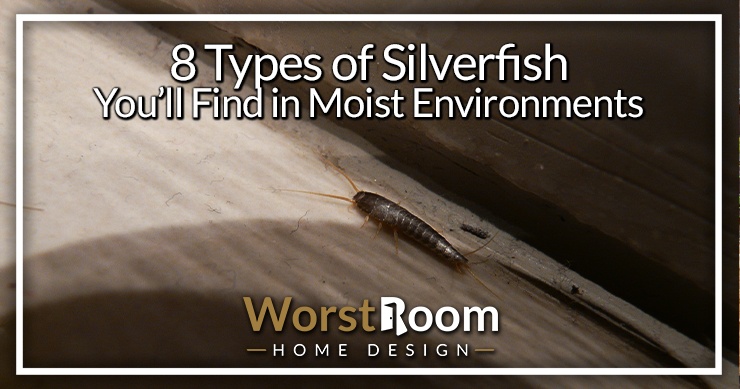
Have you ever encountered any types of silverfish in your life? I am guessing you have already seen these primitive creatures but might not have given them much attention past being grossed out. However, many of us don't recognize these insects and get confused by exactly what type of bug they are.
Those who are unfamiliar with the term "silverfish" might misjudge the name as belonging to a fish. Don't go with the name on this one. It's an insect instead of a fish. There are plenty of reasons behind the name. We will get into that later. Keep reading about the different silverfish species below.
8 Types of Silverfish
The silverfish has up to 120 species all belonging to the order Zygentoma (called Thysanura in the past), which include both silverfish and firebrat. But not all of them are common.
These days the Entomological Society of America decided to stop referring to all species within the Zygentoma order as silverfish and reserve it specifically for Lepisma saccharinum, which we mention below. Let's check on some of the different types of silverfish.
Gray Silverfish
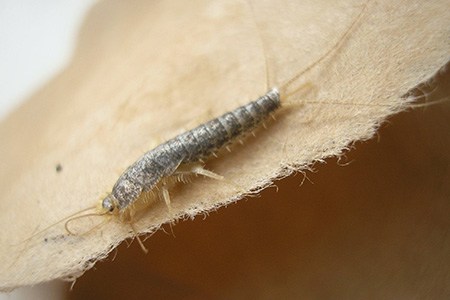
The scientific name of gray silverfish is Ctenolepisma longicaudata. This pest species was first discovered in South Africa by a German entomologist.
Though it is commonly known as the gray silverfish, some call it the paper silverfish or long-tail silverfish. Some even refer to them as 'giant silverfish'. The grayish color on the scales gives it a metallic look.
Although almost all silverfish require a humid condition to live (like most types of basements), this particular one is unique in this matter. The humidity is not an issue for them to flourish.
It can survive in a less humid environment with a warmer temperature. As a result, spreading throughout your home becomes easier for them. The outbreak of this insect is causing havoc in Europe.
As it can digest cellulose, this one will not leave a section of your house where there are cellulose-rich foods. An intriguing fact is that the results of an experiment revealed that gray silverfish types could live for up to a year consuming no food.
Four-Lined Silverfish
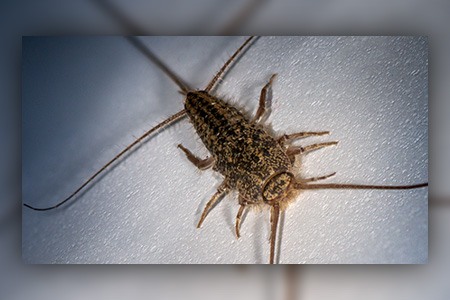
These four-lined silverfish are also known as Ctenolepisma lineatum. Unlike gray silverfish, it can be identified both indoors and outdoors. It has a brown body with dark lines around the stomach.
Though it is not the same as gray silverfish in terms of shape, color, or habitat, it does share a few food preferences. In Europe, they are bothersome house pests and are found in almost every household. Except for cold-weather areas, they are widely distributed throughout the world.
They prefer moist weather and tropical environments, and they eat almost anything in their surroundings. The four-lined silverfish eat almost the same things as the gray silverfish.
The fast-moving creature also has two long antennae and three long cerci in the back. Their forefathers had three legs in the area where the cerci now stands. These changes occurred throughout the species' progression.
Common Silverfish
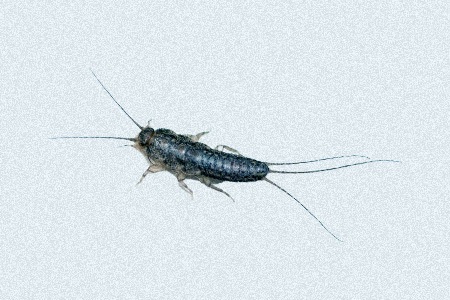
Common silverfish or Lepisma saccharina has a length of 0.5 to 1 inch. These types of silverfish are quite shiny and have a silvery finish on their bodies. If you ever observe a common silverfish closely, you will find a resemblance to a fish.
The conformity between a fish and a common silverfish is uncanny. Both of them move in a serpentine fashion, and the movement happens rapidly. Unlike other silverfish, this creature can tolerate cold weather, which is unusual for the silverfish family.
Don't be surprised if you find them on the bathroom floor, basement, or in the kitchen sink. These insects love moist areas for living. Silverfish are as nasty to find as any types of bed bugs. And the food intake is almost the same as other variants. The common silverfish can live up to 7 to 8 years and has slow maturity in terms of reproduction.
Ctenolepisma guadianicum
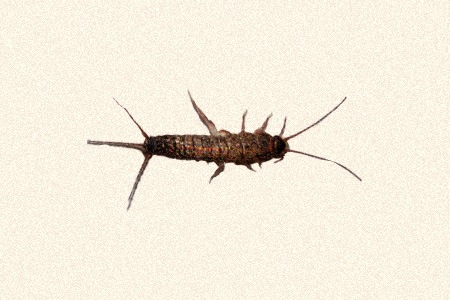
Ctenolepisma guadianicum silverfish species was first tracked down not so long ago. It was in 1990 when this tiny insect was observed for the first time. This small insect is less than 1 inch in length and has an elongated body.
The outdoors is where you can see this silverfish roaming around. You can especially observe them in a forest under the dried leaves. As this one doesn't inhabit indoor areas, we cannot consider this one a pest. The hue of this silverfish is grey.
Like other silverfish types, this one also has long, angled antennae on its head. It has six legs and abdomen appendages. Although it doesn't have any wings on its body, Guadianicum also loves humid areas and stays in the woods, where there is no lack of humidity.
Archaeognatha or Jumping Bristletail
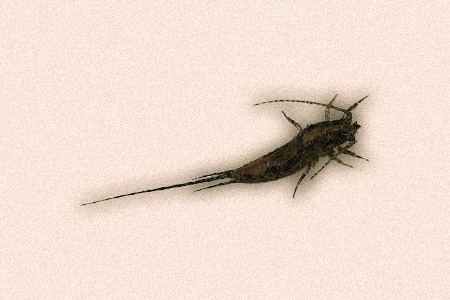
Archaeognatha has a very common name, which is jumping bristletail, and trust me, they aren't types of grasshoppers. Many people might not know what archaegnatha is, but they will surely recognize jumping bristletail.
This one has two cerci and one epiproct on the back. These elongated, thin body parts look like tails. It is not an indoor silverfish.
You will see them on stones, in the bark of the trees, and under dried leaves. So, this one is also not a pest. This primitive creature lives on carbohydrates in the form of cellulose.
Bristletails belong to the class Microcoryphia and have the typical wingless and cylindrical shaped body. Though you find them in the areas mentioned above, they much prefer moist soil, which is why you'll catch them in grassy and wooded areas, eating on algae, lichens, moss, and decomposing organic matter.
Ctenolepisma ciliatum
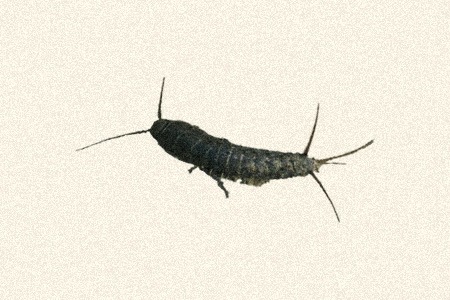
Ctenolepisma ciliatum are types of silverfish that are found in some parts of Europe (like Portugal and the Mediterranean basin) and western Asia. This primitive lepisma has some similarities to Ctenolepisma longicaudatum.
The color of the body is either grey or brownish. Here, the dorsal pattern is uniform and has an iridescent hue. This silverfish also loves humidity and roams around in the outdoor areas. If only they were as pretty as all the types of ladybugs, I wouldn't have such a visceral reaction to them.
Ctenolepisma almeriense
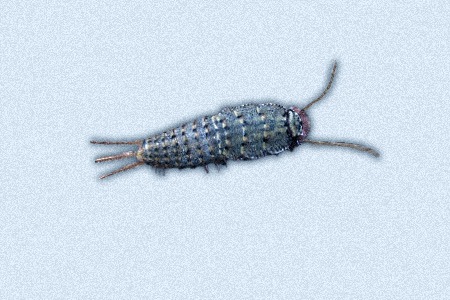
Ctenolepisma almeriense has similarities with Ctenolepisma lineatum, and there was a time when they both were considered the same species. But as days passed by, the differences between these two species started coming to light.
It is not a widely spread silverfish. Some provinces of the Mediterranean part of Spain are the areas where this one is mostly found. This one is also not an indoor species. It loves arid regions and stays in dirty areas under trees.
One of its favorite places to live is under Pinus and Juniperus trees. Almeriense also loves a moist environment. If you talk about the length, this one can grow up to 13 mm long. And this length is measured by excluding the appendages.
Firebrat or Thermobia domestica
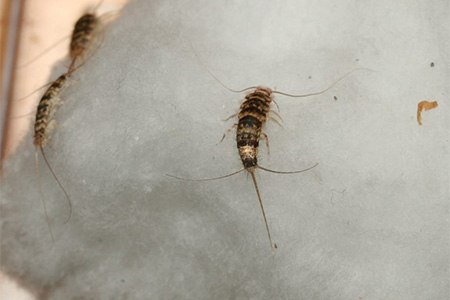
While not technically a silverfish, just very closely related to them, the firebrat (sometimes listed as the Thermophila furnorum silverfish species) is a hexapod that's typically no longer than 1.5 centimeters. They're called firebrats because they prefer environments with higher temperature and humidity.
This is why in homes these silverfish types are typically found near the boilers and furnaces. They're common in bakeries because they like to snack on carbohydrates. But they also like the starches and proteins found in animal foods (like dog or cat food).
Outdoors you tend to find them hiding under rocks and within leaf litter. They don't cause problems other than contaminate your food. They're harmless, just an annoyance and kind of gross to see inside.
Silverfish Scientific Classification
Scientist categorize the types of silverfish into the following classifications:
- Kingdom: Animalia
- Phylum: Arthropoda
- Class: Insecta
- Order: Zygentoma
- Family: Lepismatidae
- Genus: Lepisma
- Species: L. saccharinum
You'll find this cosmopolitan silverfish species all over the planet, from Eurasia to Australia, and from the Pacific to the Americas and Africa. Everyone is aware of various silverfish types and like me, probably grossed out by them.
Types of Silverfish You May Encounter Around Your Home
Silverfish are among the most common insects that we bump into. They will find a home if you do not take care of the damp and moist areas of your house. Always try to prevent it before you need to cure it.
To do so, you must secure all inappropriate gaps in your home and maintain good hygiene practices. So, now, if you bump into different types of silverfish, don't panic and take the necessary steps.
You'll Also Enjoy:
- 15 Types of Termites to Identify & Fight to Preserve Your Wood
- 15 Types of Gnats We All Wish Would Buzz Off [Identification Guide]
- 19 Types of Crickets: Easy Identification Guide with Pictures
- 12 Types of Dragonflies: The Different Species To Know
- How to Get Rid of Fungus Gnats - Quickly & Permanently



